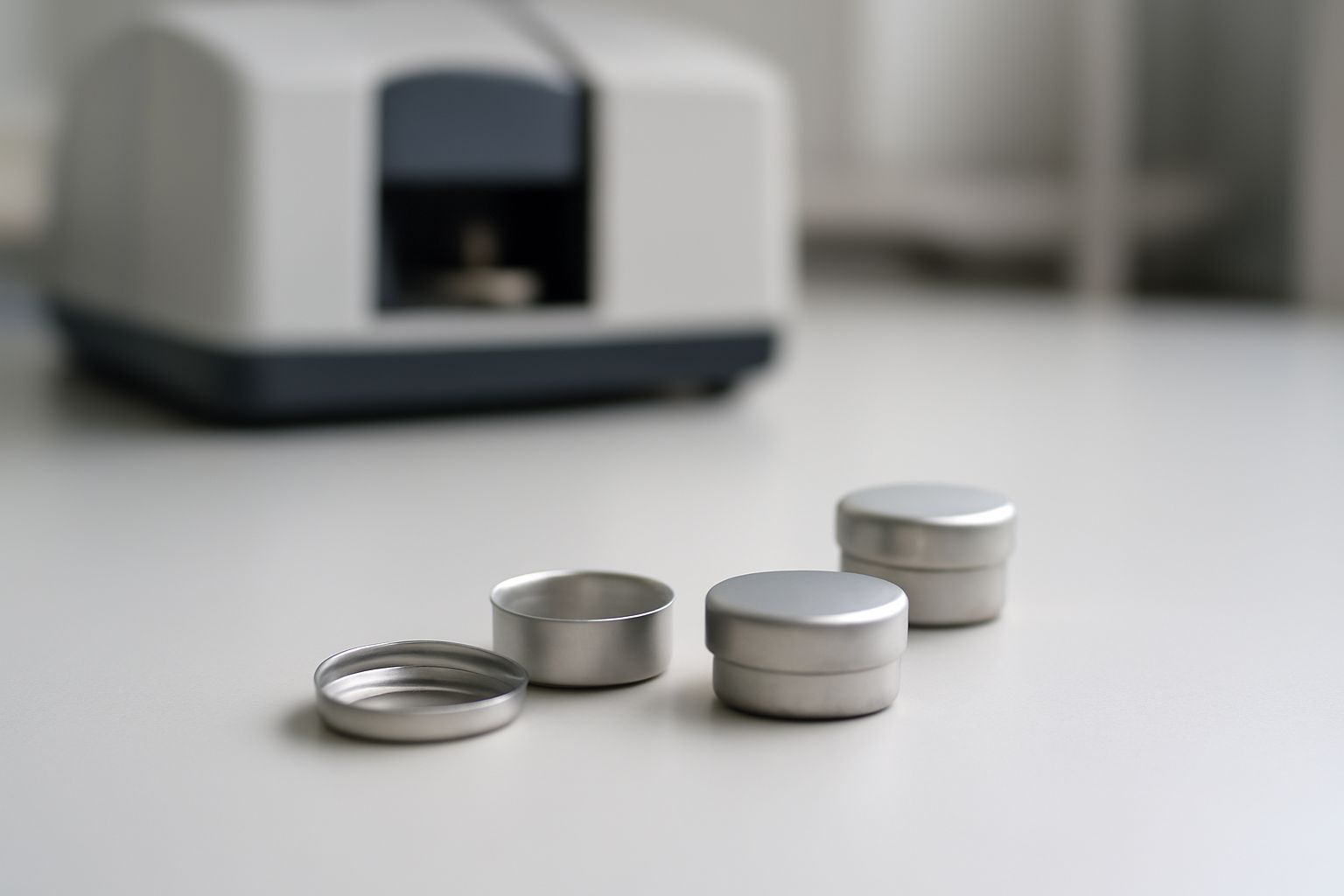Your cart is empty.
shop now
Your cart is empty.
shop now
Many labs still rely on outdated sample pans, missing critical performance improvements. This puts test accuracy and consistency at risk and increases overall costs.
Recent innovations in disposable DSC sample pans now include advanced materials, precision manufacturing, and user-driven design improvements. Labs using these new technologies benefit from higher accuracy, reliable results, and easier compliance with modern standards.

I always recommend staying updated with the newest changes in the field. Even small upgrades in consumables can improve lab workflows and data quality by a wide margin. Below, I break down the most important improvements and how each one impacts your daily DSC analysis.
Lab teams lost many samples before because early DSC pans could not handle high temperature or chemical exposure. This led to inconsistent results and damaged test setups.
Today, new materials like high-purity aluminum, platinum, and specialty alloys give disposable DSC sample pans more heat resistance, chemical stability, and consistent thermal conductivity.
| Material | Performance Feature | Benefit | More Information |
|---|---|---|---|
| High-purity Aluminum | High thermal conductivity | Even heating, stable baselines | Common for polymer and organic analysis |
| Platinum | Temperature resistance up to 1600°C | Safe for advanced ceramic or metal samples | DSC applications |
| Nickel alloys | Chemical durability | Reduces pan corrosion and sample loss | Used in harsh chemical environments |
I find that switching to better materials also cuts down on pan failures, lowering replacement rates. Most improvements in reproducibility come from more stable baseline signals, which is critical for consistent thermal analysis (ScienceDirect Source).
Old manufacturing techniques led to pans with uneven thickness and inconsistent sealing, causing unwanted data drift in sensitive DSC tests.
Modern automated processes such as precision stamping, robotic assembly, and surface polishing now ensure each disposable DSC pan meets strict tolerances for size, weight, and lid fit.
| Technology | Improved Parameter | Outcome | Learn More |
|---|---|---|---|
| Precision Stamping | Uniform wall thickness | Reduces thermal lag and drift | Stamping |
| Robotic Assembly | Perfect lid sealing | Consistent baseline measurements | Assembly automation |
| Surface Polishing | Clean, debris-free surfaces | Lower noise level in data | Polishing process |
I have seen batch-to-batch repeats improve with these upgrades. Labs get more usable data from each run and cut down on instrument cleaning. Reliable pan quality also means less wasted time.
I know many research labs worry about meeting new industry safety rules. They risk audits and delayed projects when pans do not comply with regulations.
All major disposable DSC sample pan suppliers now align their designs with GMP and ISO standards, adding traceability, certifications, and safer packaging as standard features.
| Regulation/Standard | Design Change | Lab Advantage | Reference |
|---|---|---|---|
| GMP | Unique lot numbers, batch records | Easy recall and accountability | ISO 9001 |
| ISO 17025 | Testing method validation | Globally accepted data | Audit-friendly paperwork |
| Material Safety Data | Detailed chemical info | Safe for restricted or regulated samples | REACH Regulation |
I suggest always checking for supplier credentials and clear documentation. Certification is now standard, and most global markets need these features for imports and compliance audits.
Lab users used to have no way to get changes made to DSC pan designs. Frustrations with sealing, capacity, or fit slowed work and created errors.
Feedback from research labs and factories now drives better pan ergonomics, improved packaging, and even custom sizing, speeding up test setup and limiting errors.
| Feedback Type | Product Update | User Benefit | Context / Data |
|---|---|---|---|
| Sealing issues | Redesigned lids and new gasket types | Lower leak risk, valid sample mass | O-ring information |
| Requirement for larger samples | High-capacity pans released | Fewer runs needed for each batch | User surveys, REDTHERMO reports |
| Storage complaints | Stackable and coded packaging | Less loss, easy pan identification | Packaging |
Whenever I hear new demands from clients, I pass these directly to our designers. Many new features first come from customer pain points, collected through annual lab surveys and online user communities.
Keeping track of innovations in disposable DSC sample pans improves lab results and future-proofs your workflow. New materials and precise engineering help every lab team get the results they need.
Contact technical support: info@redthermo.com